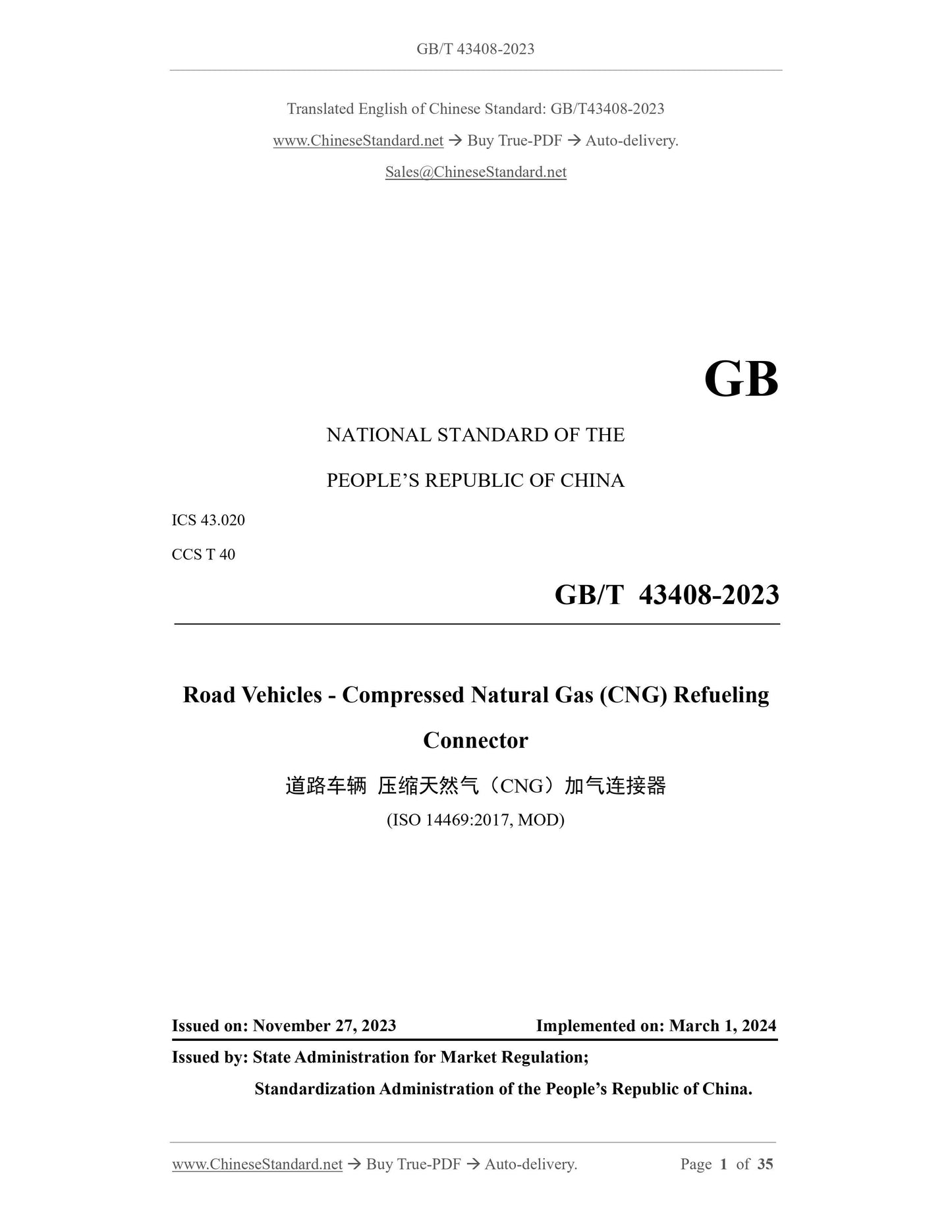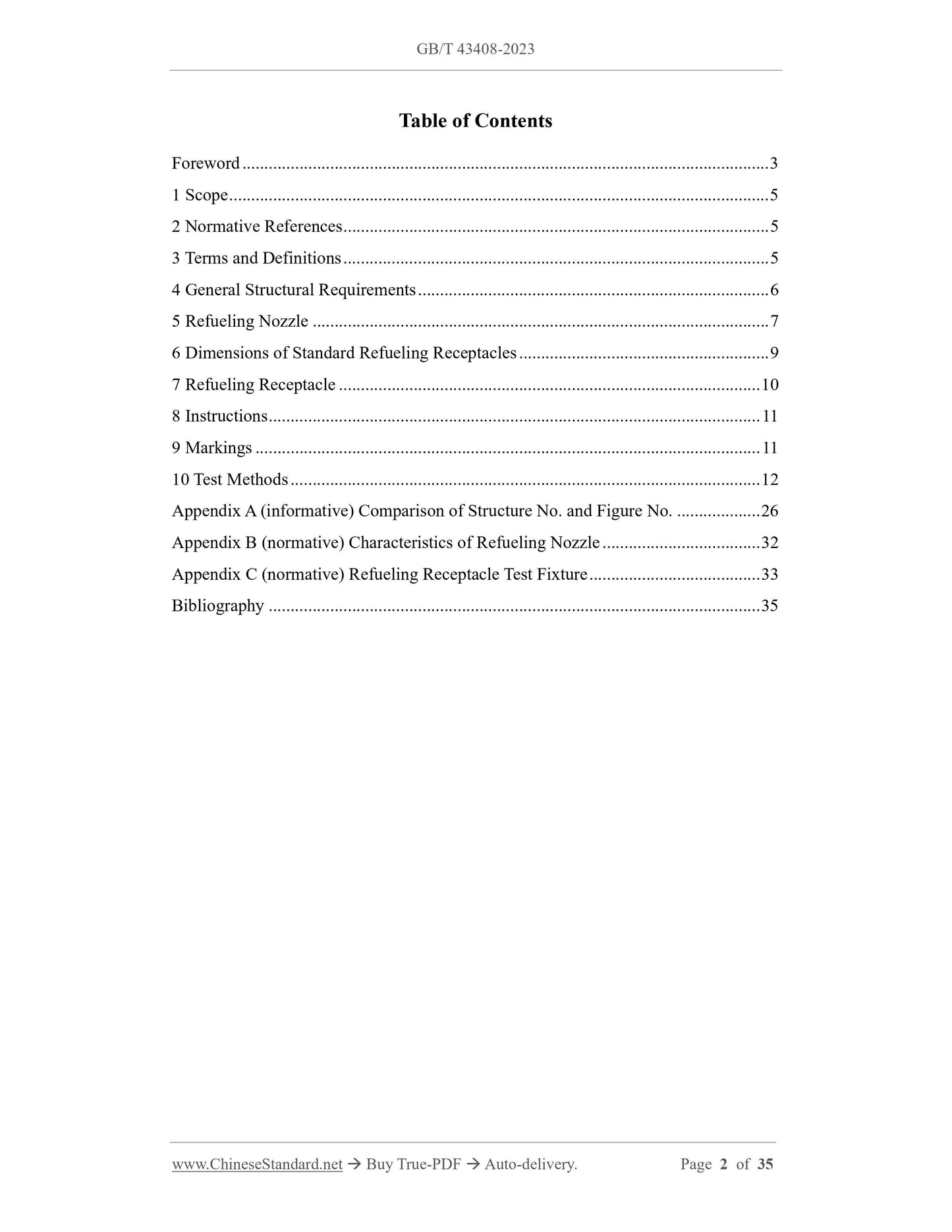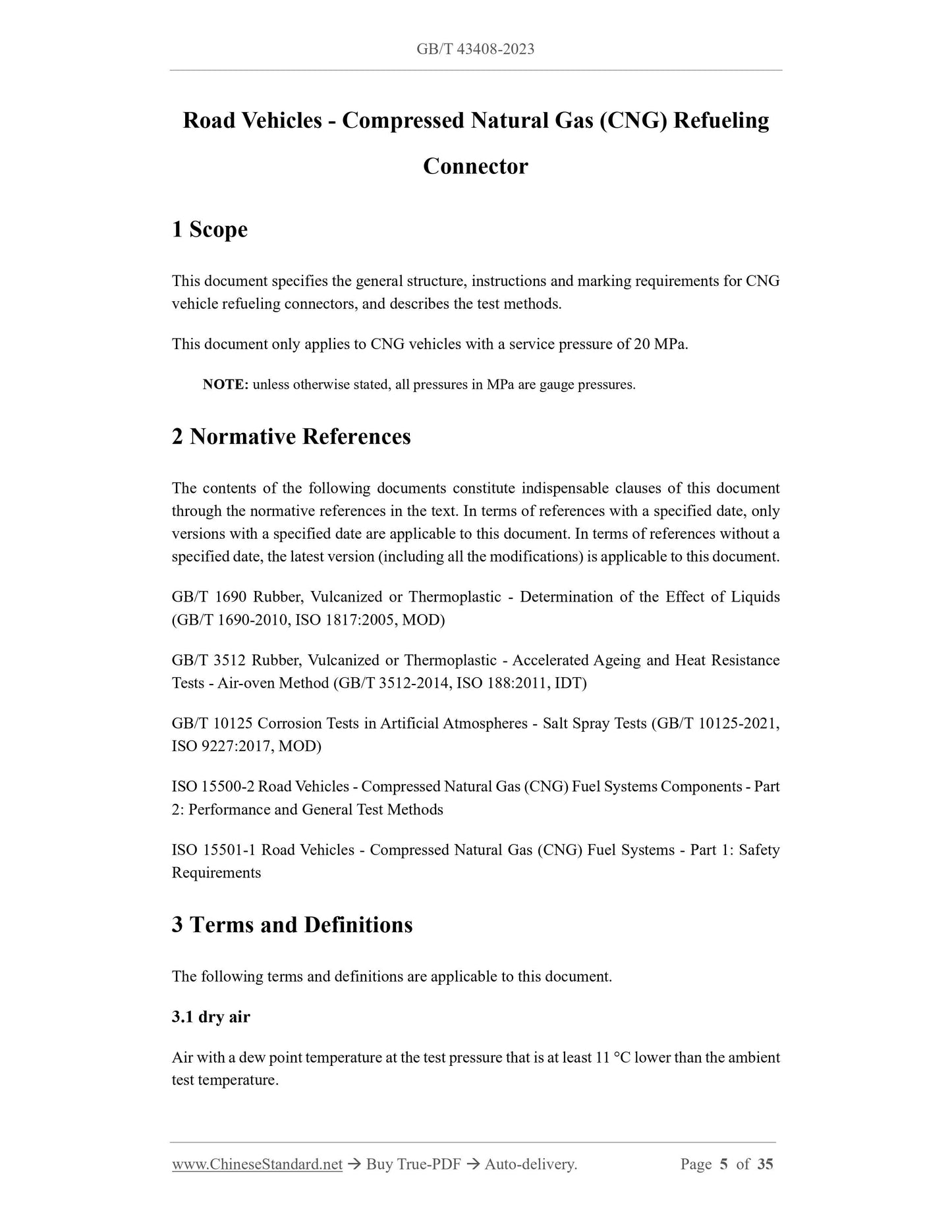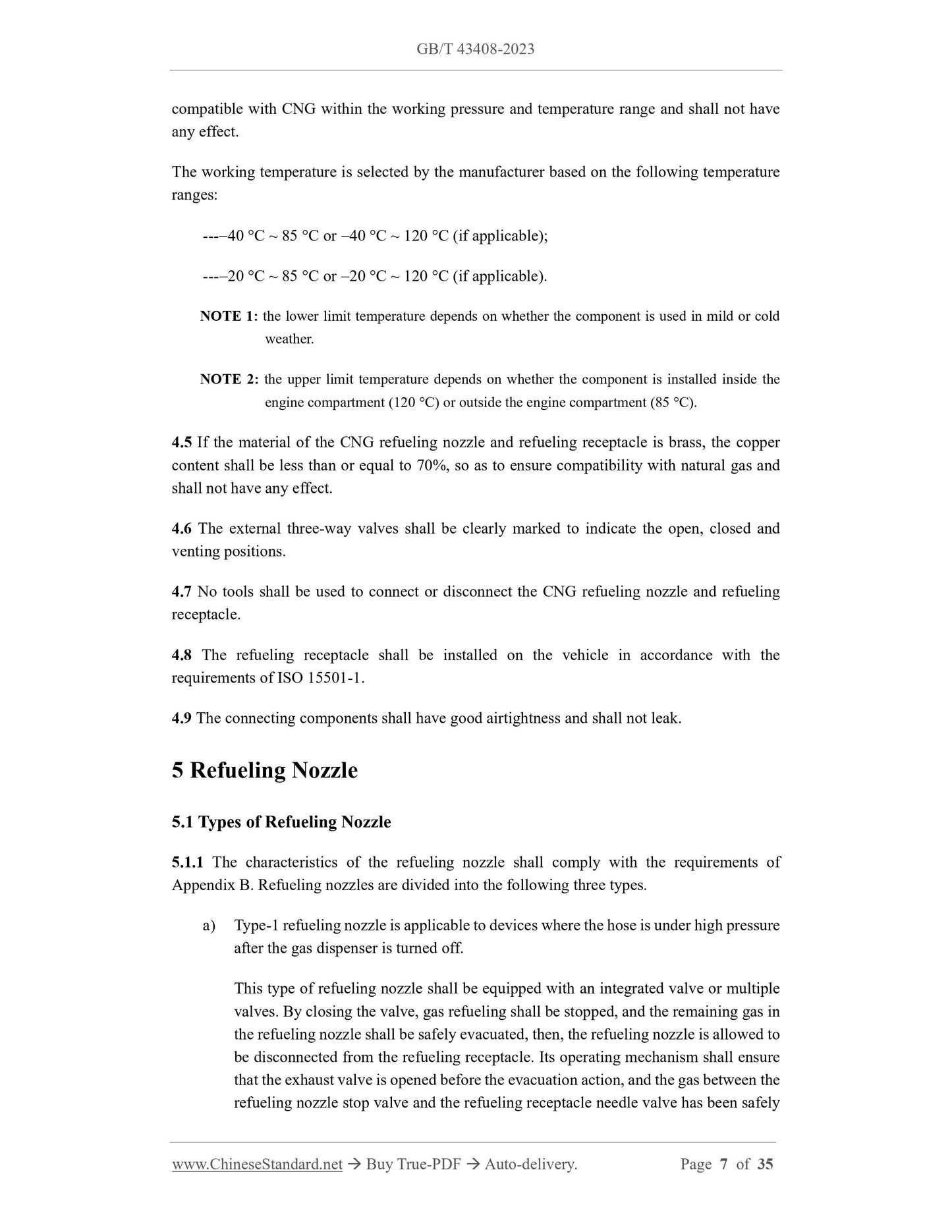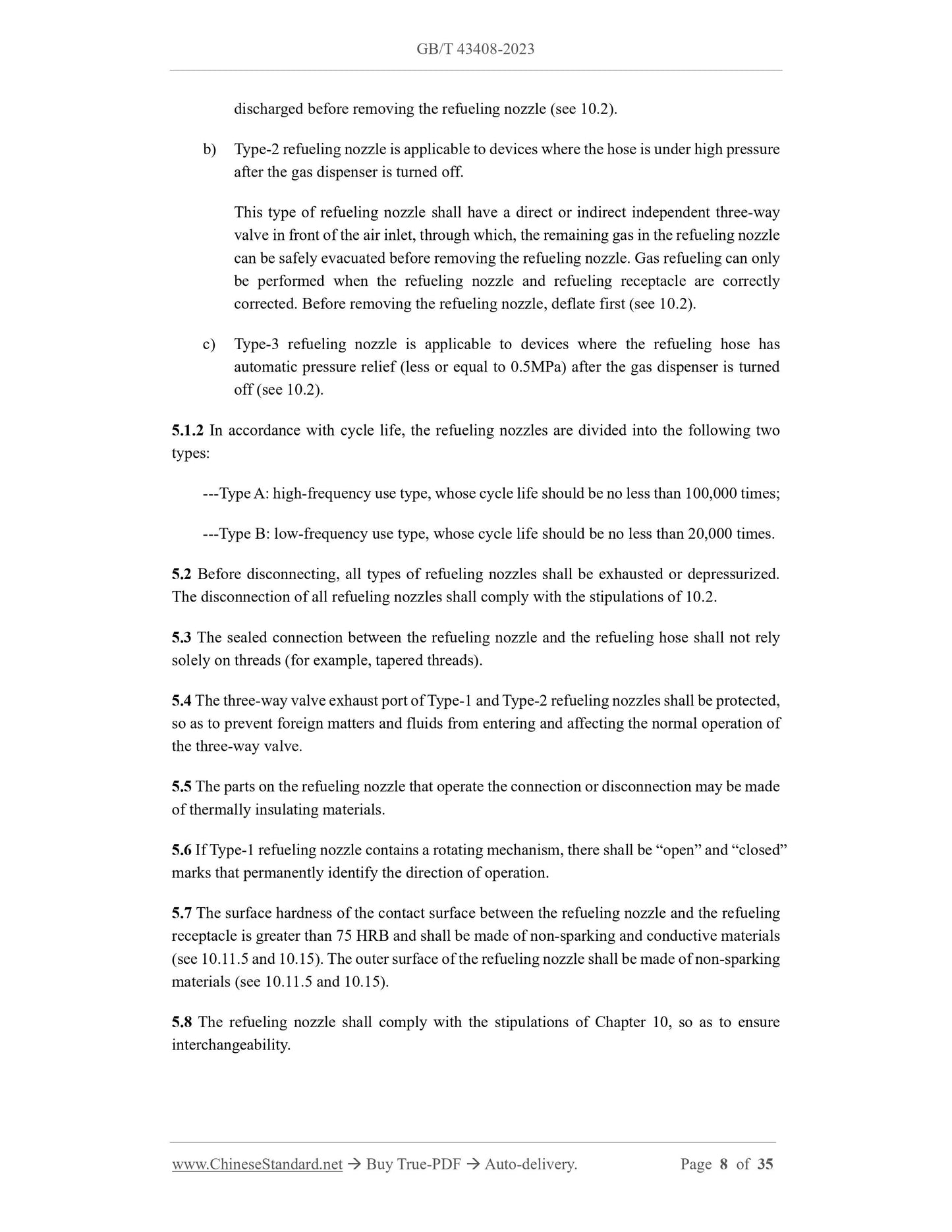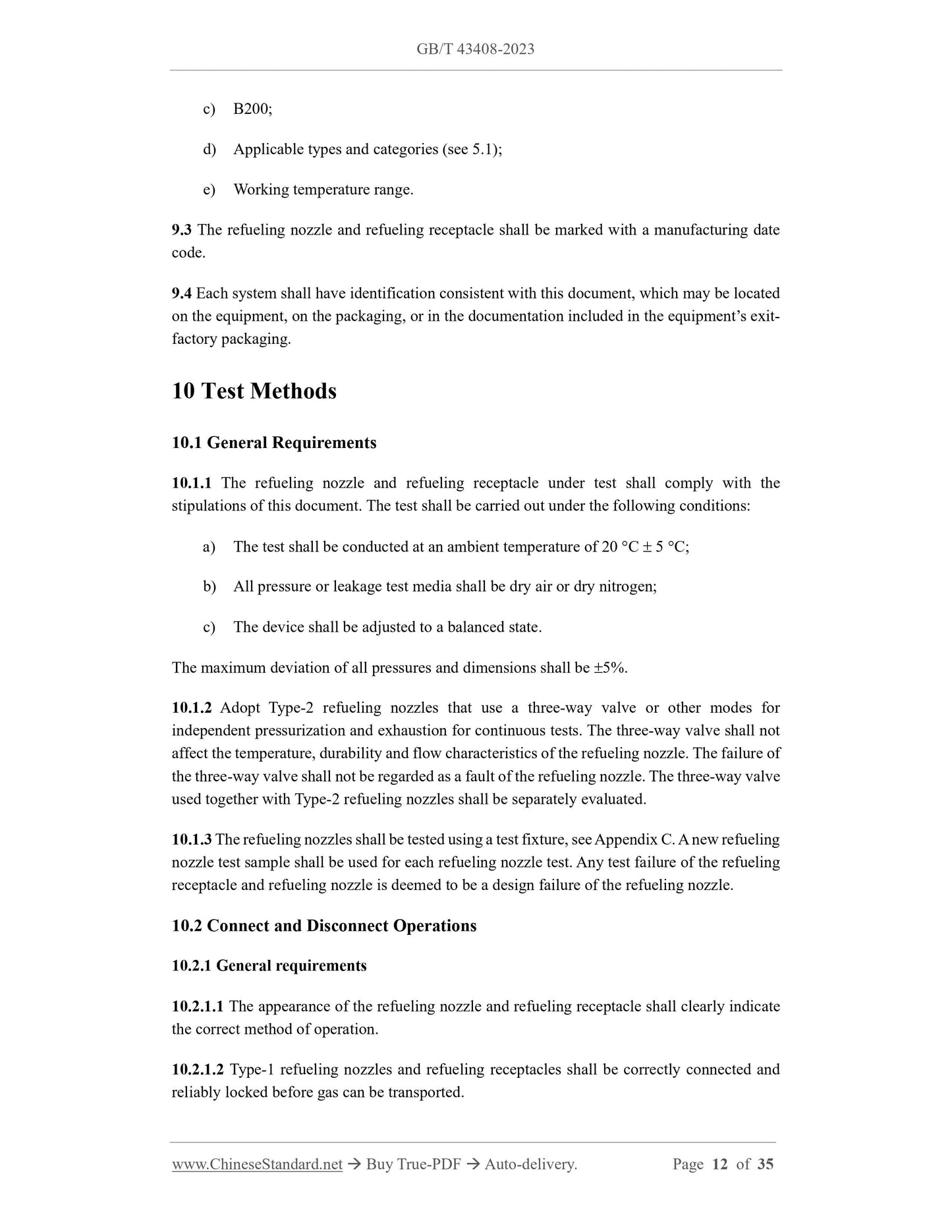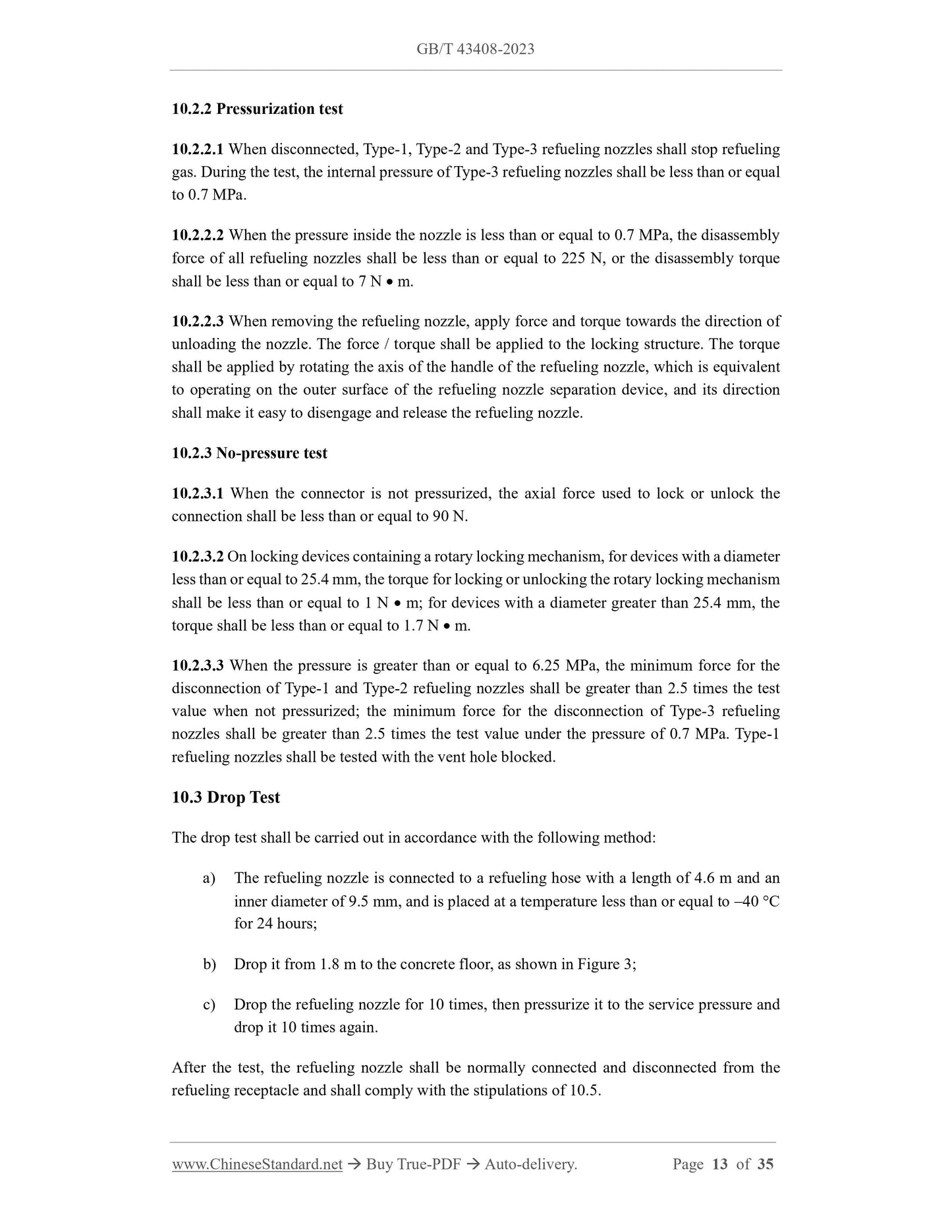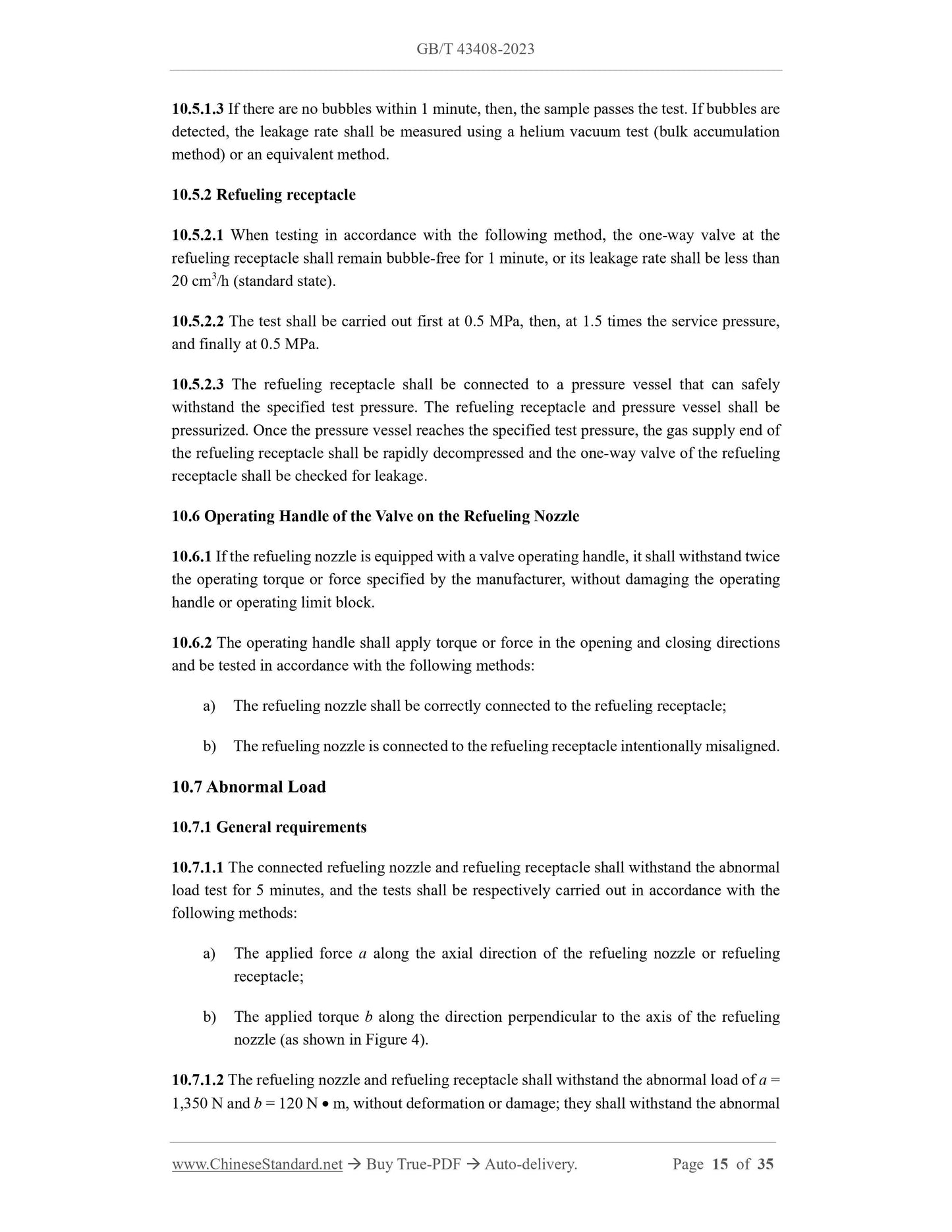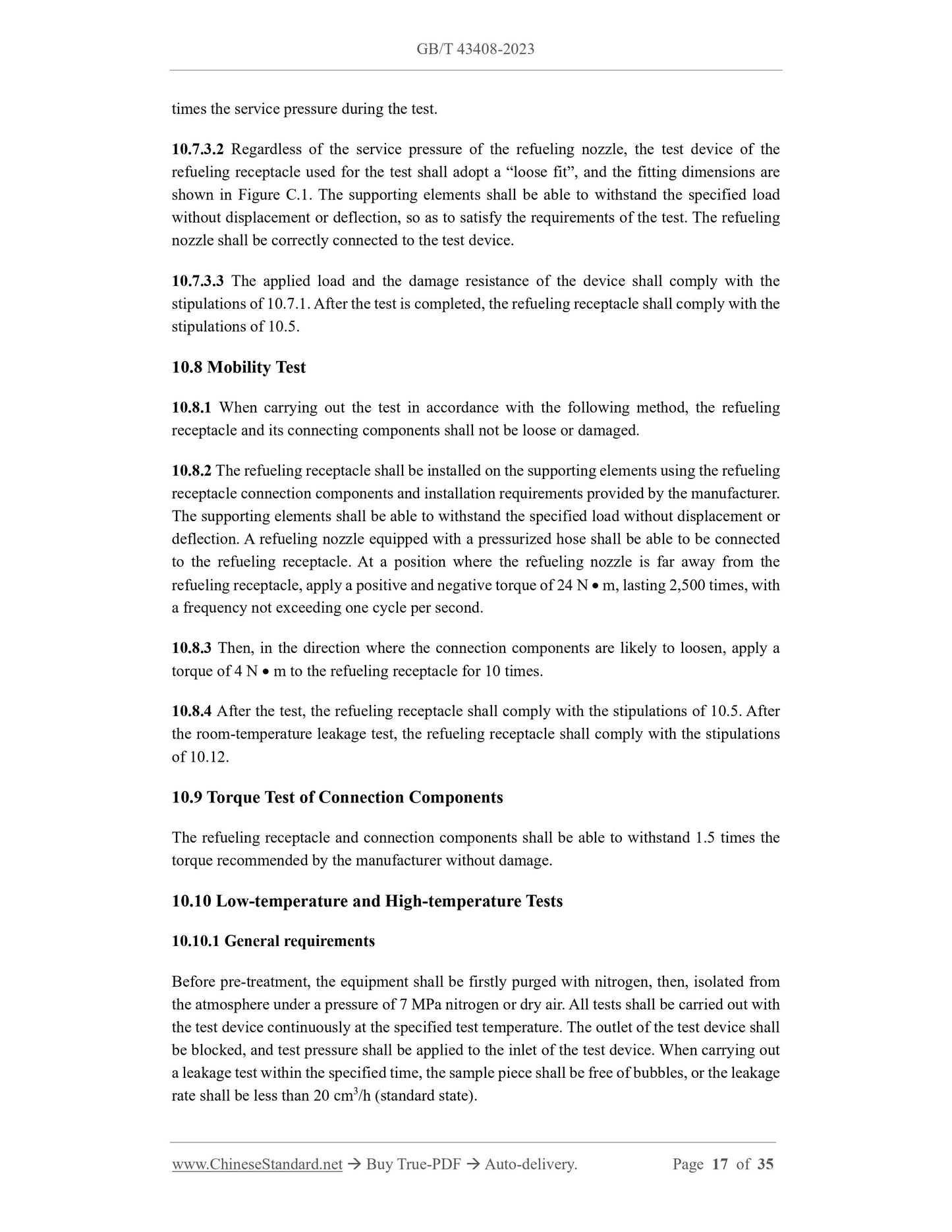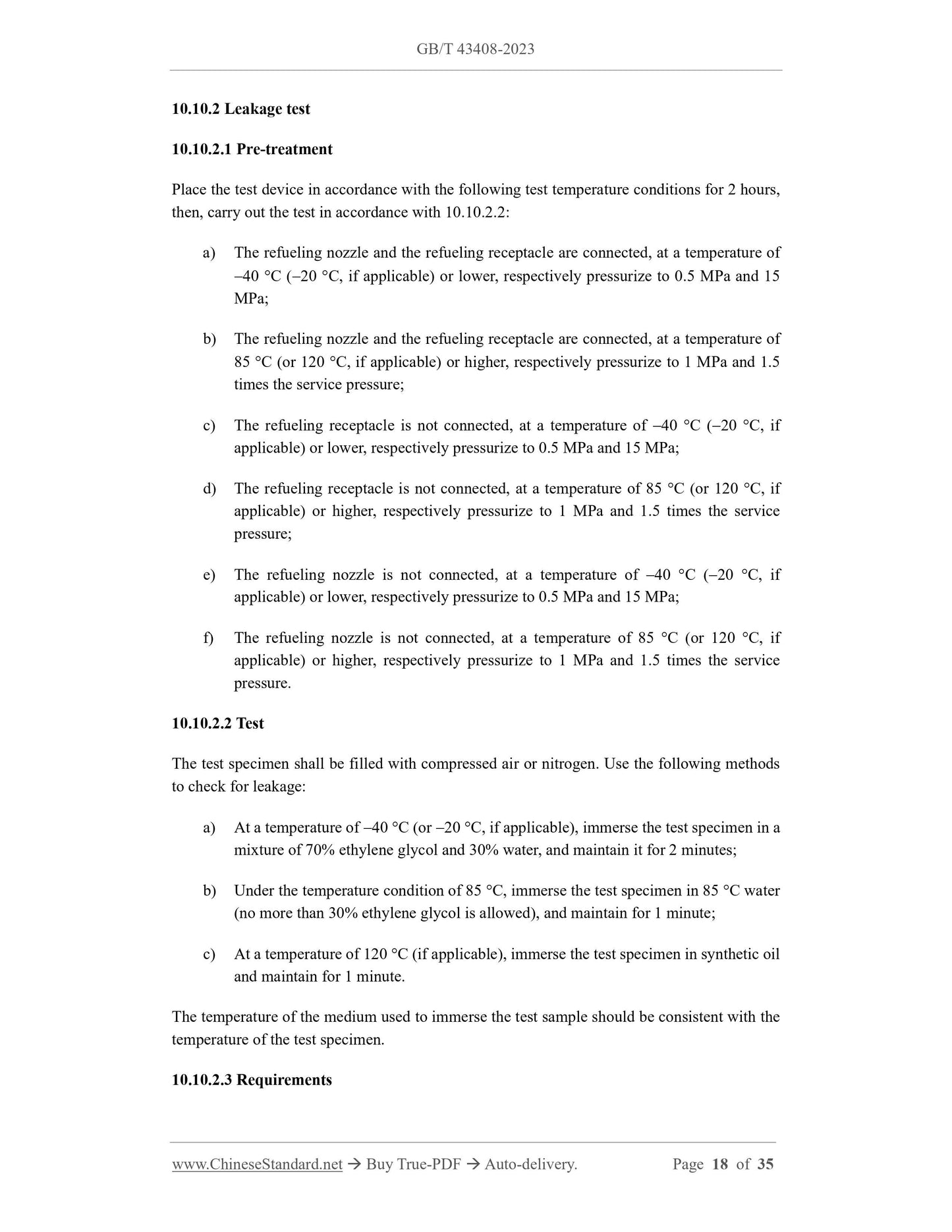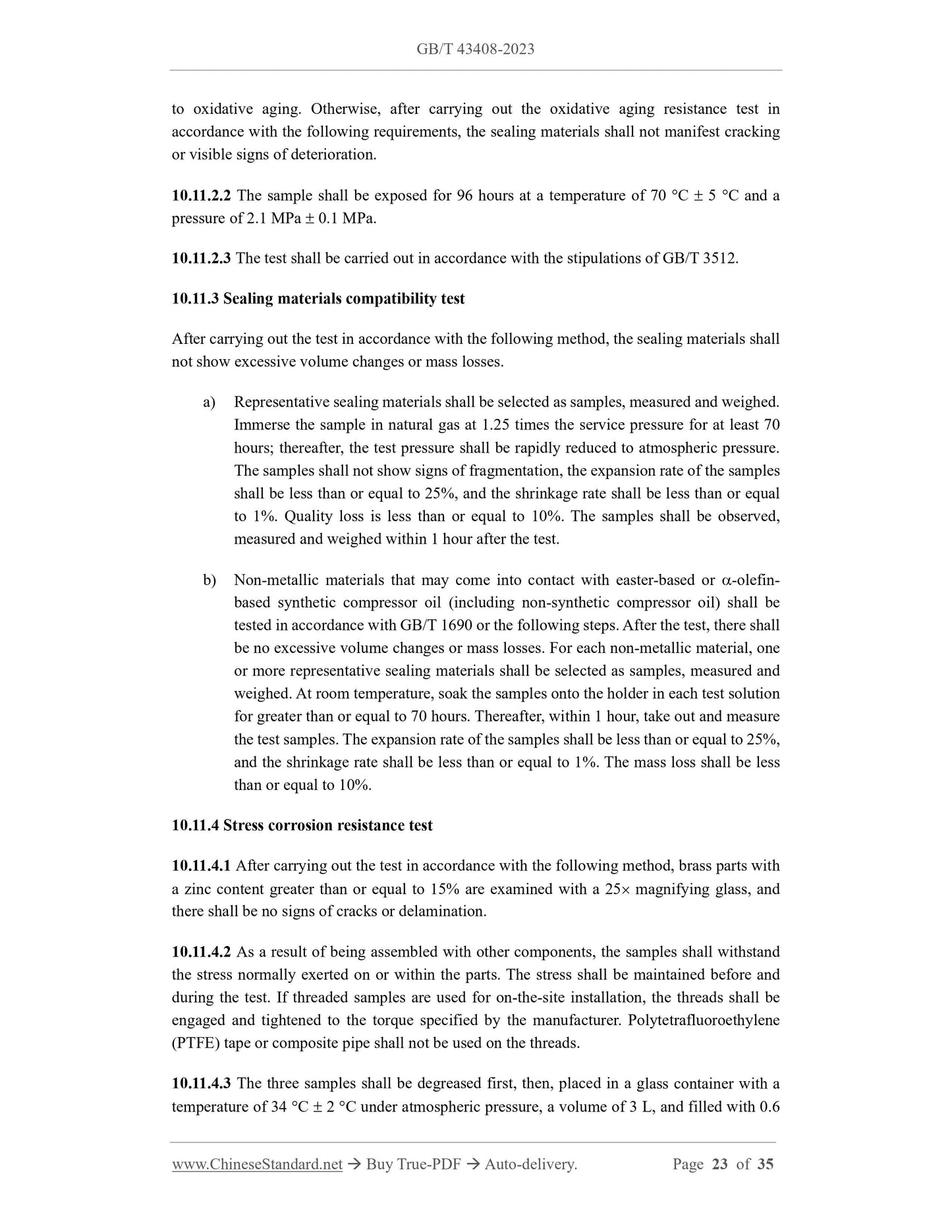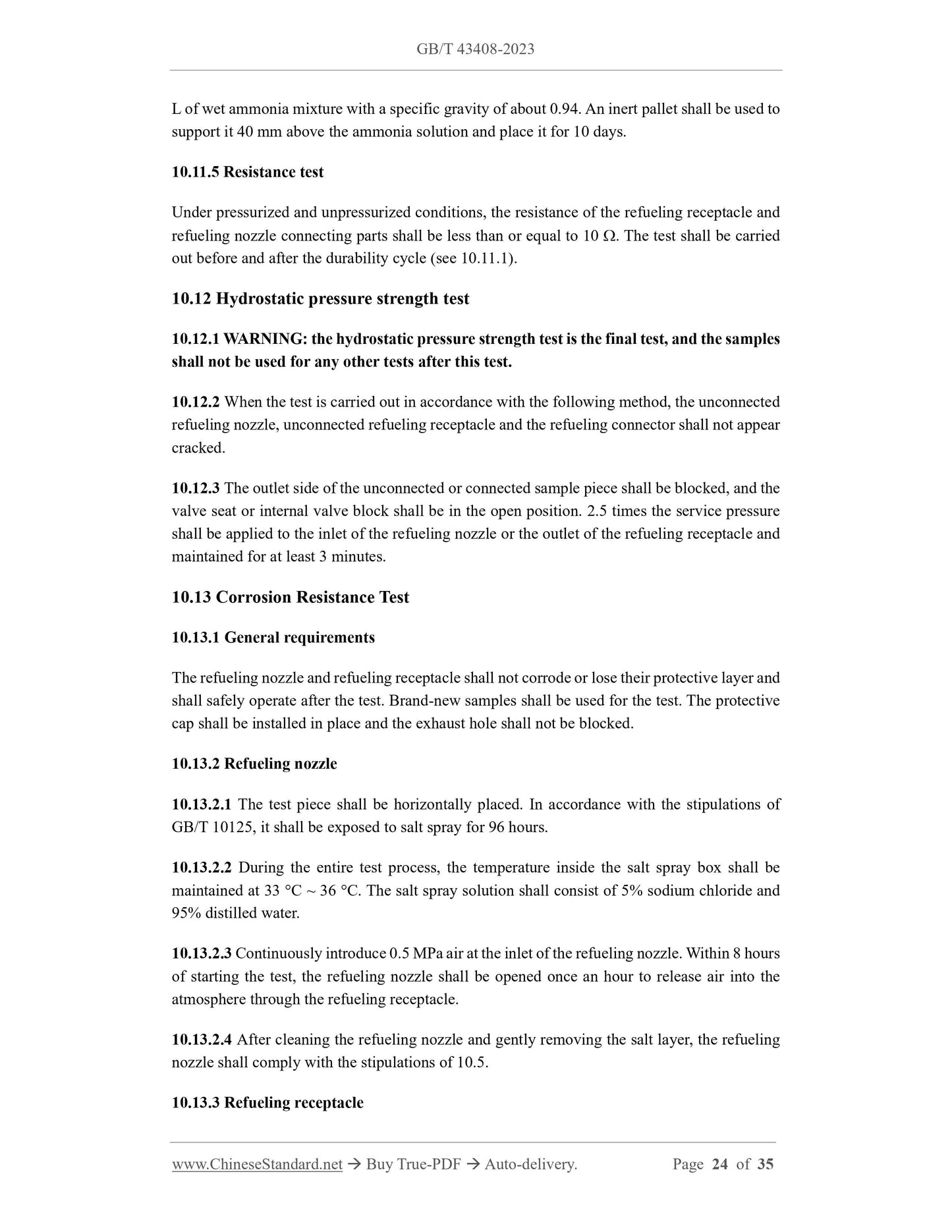1
/
of
12
www.ChineseStandard.us -- Field Test Asia Pte. Ltd.
GB/T 43408-2023 English PDF (GB/T43408-2023)
GB/T 43408-2023 English PDF (GB/T43408-2023)
Regular price
$575.00
Regular price
Sale price
$575.00
Unit price
/
per
Shipping calculated at checkout.
Couldn't load pickup availability
GB/T 43408-2023: Road vehicles - Compressed natural gas (CNG) refuelling connector
Delivery: 9 seconds. Download (and Email) true-PDF + Invoice.Get Quotation: Click GB/T 43408-2023 (Self-service in 1-minute)
Newer / historical versions: GB/T 43408-2023
Preview True-PDF
Scope
This document specifies the general structure, instructions and marking requirements for CNGvehicle refueling connectors, and describes the test methods.
This document only applies to CNG vehicles with a service pressure of 20 MPa.
NOTE: unless otherwise stated, all pressures in MPa are gauge pressures.
Basic Data
| Standard ID | GB/T 43408-2023 (GB/T43408-2023) |
| Description (Translated English) | Road vehicles - Compressed natural gas (CNG) refuelling connector |
| Sector / Industry | National Standard (Recommended) |
| Classification of Chinese Standard | T40 |
| Classification of International Standard | 43.020 |
| Word Count Estimation | 29,294 |
| Date of Issue | 2023-11-27 |
| Date of Implementation | 2024-03-01 |
| Issuing agency(ies) | State Administration for Market Regulation, China National Standardization Administration |
Share
